




Make a meaningful impact in your community by becoming the owner of a Natural Awakenings magazine. Empower others with current, valuable insights and resources to enhance their physical, mental, emotional and spiritual well-being.
As a franchise owner, you’ll inspire positive change, provide readers with tools for healthier living and connect local businesses with an audience eager for transformation.
Why Own a Natural Awakenings Magazine?

n Create a Healthier Community: Be the go-to resource for wellness and personal growth in your area.
n Boost Your Income: Take control of your financial future with a proven business model.
n Enjoy a Flexible Lifestyle: Work from home while pursuing a fulfilling, dynamic career.
n A proven business model with low startup costs.
n Comprehensive training and friendly, ongoing support.
n Flexible work schedule with many work-from-home opportunities.
n Access to a network of like-minded franchise owners.
n Financing Options Available.
Join a thriving network of passionate franchise owners reshaping the future of holistic health and wellness.
Call 239-206-2000 for a FREE evaluation of your community’s potential. Learn more or apply today at: Corp.NaturalAwakenings.com

for a free evaluation of
community's potential at 239-206-2000. To apply or learn more, visit Corp.NaturalAwakenings.com.
Add Your Community to Where Natural Awakenings Is Now Publishing:
• Atlanta, GA
• Boston, MA
• Broward County, FL
• Bucks/Montgomery Counties, PA
• Central Florida/Greater Orlando, FL
• Central New Jersey
• Charlotte, NC
• Chicago, IL
• Columbia, SC
• Dallas, TX
• Daytona/Volusia/Flagler Counties, FL
• Detroit/Wayne County, MI
• Fairfield & Southern Litchfield Counties, CT
• Gainesville/Ocala/The Villages, FL
• Grand Traverse Region/Northern Michigan
• Greater Ann Arbor, MI
• Greater Lansing, MI
• Greater Oakland, Macomb, Livingston, Genesee, MI
• Gulf Coast, Alabama/Mississippi
• Hartford/Tolland, CT - Coming soon
• Houston, TX
• Hudson County, NJ
• Jacksonville/St. Augustine, FL
• Lancaster/Berks, PA
• Lehigh Valley, PA
• Long Island, NY
• Milwaukee, WI
• Monmouth/Ocean Counties, NJ
• Naples/Fort Myers, FL
• New Haven, CT
• New London/Windham, CT - Coming soon
• New York City, NY
• North Central New Jersey
• North New Jersey
• Northwest Florida
• Palm Beach, FL
• Philadelphia, PA
• Phoenix, AZ
• Pittsburgh, PA
• Rhode Island
• Richmond, VA
• Sarasota, Manatee, Charlotte and DeSoto Counties, FL
• South Central Pennsylvania
• South Jersey, NJ
• Southeast North Carolina
• Space & Treasure Coast, FL
• Tampa, FL
• Tucson, AZ
• Twin Cities, MN
• Westchester/Putnam/Dutchess, NY
• Western Michigan















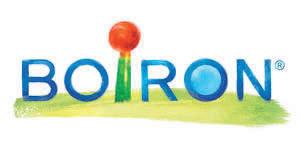


















Spring is a season of renewal—a time when the earth awakens from its winter slumber, bursting forth in vibrant colors and fresh energy. It is nature’s way of reminding us that life is a continuous cycle of growth, transformation and connection. As buds blossom and birdsong fills the air, we are invited to embrace the sacred connection that binds us to the world around us.
This connection extends far beyond the physical renewal of the season. It speaks to the intricate web of relationships we share—with nature, with one another and with the deeper essence of life itself. Every living thing exists in harmony, dependent upon and influencing one another in ways both seen and unseen. From the tiniest sprout reaching for the sun to the vast forests that cleanse our air, everything is woven together in a sacred dance of existence.
For many, spring is a time to pause, to breathe deeply and to realign with what truly matters. It is a chance to listen—not just to the songs of the birds or the rustling of leaves but to the whispers
of our own hearts. The natural world offers us endless lessons in resilience, patience and balance if only we take the time to observe and appreciate them.
As we welcome the warmth of the sun and the promise of new beginnings, may we also recognize our role in this beautiful interconnectedness. Let us nurture our relationships, tend to the earth with care and embrace the profound energy of renewal that spring provides.
This month, we celebrate the sacred bond that unites us all. Whether through planting a garden, spending time with loved ones or simply standing in awe of nature’s beauty, may we honor this connection and carry its lessons forward.
Here’s to a season of awakening, of deepening our relationships with ourselves and the world, and of celebrating the sacred connection that makes life so rich and meaningful.
With gratitude
HEALTHY LIVING HEALTHY PLANET
LOCAL CONTACT
734-757-7929
Publisher@HealthyLivingMichigan.com HealthyLivingMichigan.com
P.O. Box 2717, Ann Arbor, MI 48106
Subscriptions are available for $120 (for 12 issues) by emailing the above address.

Natural Awakenings is printed on partially recycled and fully
Publishers John & Trina Voell III
Design & Production John & Trina Voell III
Ad Design Josh Halay
Editors John & Trina Voell III
Proofreader Randy Kambic
Calendar Theresa Archer
Sales & Marketing John & Trina Voell III Rachel Cara
Distribution Rachel Cara
Website Design Locable
Website & Social Media Carolyn Coogan SherTech
CEO Kimberly B. Whittle
COO Michael Bevilacqua
CMO Vee Banionis
Sr. VP Operations Brian Stenzler, DC
National Editor Sandra Yeyati
Editor Brooke Goode
Copy Editor Melanie Rankin
Print Production Specialist Kevin Rankin
Design Director Agnes Mazeikaite
Production Flip180
Customer Service Dani Bucad
National Contact 350 Main St, Ste 9B Bedminster, NJ 07921 239-206-2000
Northern Michigan / Grand Traverse Region HealthyLivingMichigan.com © 2025 by Natural Awakenings. All rights reserved. Although some parts of this publication may be reproduced and reprinted, we require that prior permission be obtained in writing. Natural Awakenings is a free publication distributed locally and is supported by our advertisers. Please call to find a location near you or if you would like copies placed at your business. We do not necessarily endorse the views expressed in the articles and advertisements, nor are we responsible for the products and services advertised. Check with a healthcare professional regarding the appropriate use of any treatment.


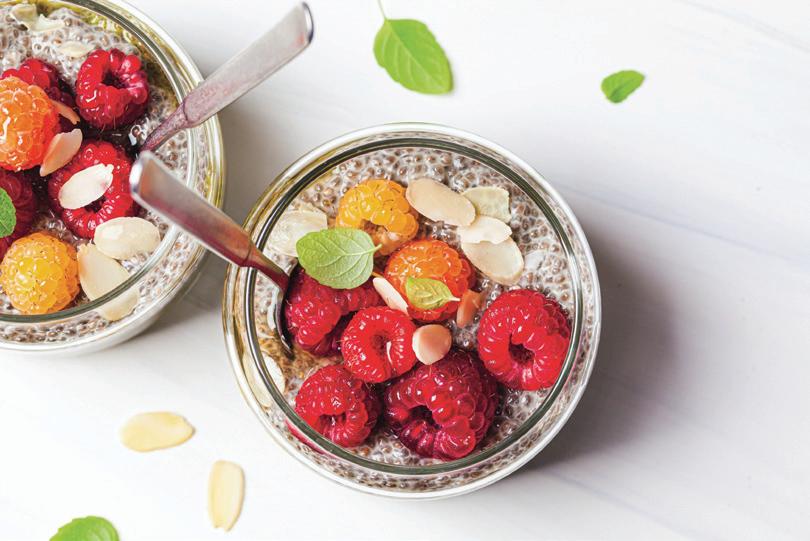


by Paul Bohlman
Therapeutic & Sports


Massage by Paul Bohlman launches a newly designed website, offering clients a seamless way to book appointments online. The enhanced platform provides a user-friendly experience with detailed service descriptions, practitioner credentials and wellness insights.
Therapeutic & Sports Massage by Paul Bohlman specializes in customized bodywork designed to support the body’s natural healing processes. Each session is tailored to address individual needs, whether for pain relief, increased mobility or enhanced athletic performance. The practice integrates various techniques, including neuromuscular therapy, trigger point therapy, craniosacral therapy and sports massage.
Founder Paul Bohlman, a Certified Massage Therapist, graduated from Irene’s Myomassology Institute, in Southfield, Michigan, in September 2000. With over two decades of hands-on experience, he has completed advanced training in multiple specialized modalities. His approach is rooted in skill and personalized care, helping clients improve overall well-being through targeted massage therapy.
Services include 60- and 90-minute sessions, as well as a package of 10 one-hour massages for those seeking long-term therapeutic benefits. Whether clients aim to alleviate chronic pain, optimize athletic performance or simply unwind, Bohlman’s expertise ensures a comprehensive and effective treatment plan.
Location: 425 Boardman Ave., in The Box building, Traverse City. For more information or to make an appointment, call 231-632-1807 or visit PaulBohlman.com. See ad page 30.
Grand Traverse County RecycleSmart partners with MakerFest 2025 for a special Earth Day edition of the annual celebration of making, creativity and sustainability. The free event takes place from 10 a.m. to 2 p.m., April 26 at Howe Arena, inside the Grand Traverse County Civic Center.
This year’s MakerFest blends STEAM (science, technology, engineering, art and math) with Earth Day education, featuring hands-on activities and exhibits focused on upcycling, repurposing and recycling. Guests will enjoy indoor displays—and possibly some outdoors—highlighting eco-innovation and community collaboration.
Dozens of local exhibitors will participate, including Oryana Co-op, the Dennos Museum, Inland Seas Education Association, the Michigan Department of Natural Resources, SEEDS Ecology and Education Centers, the Grand Traverse Butterfly House & Bug Zoo and the U.S. Forest Service. Younger visitors can explore a dedicated Littles
Area with booths from the Great Lakes Children’s Muse um, TADL Youth Services and Dolly Parton’s Imagination Library. Robotics clubs, artists, librar ies, environmental groups and commu nity organizations will also be present.

To support Earth Day efforts, attendees are encouraged to bike, carpool or ride the free BATA Bayline. Sustainable travel earns a square on the family BINGO card, which doubles as a ticket for hourly prize drawings.
BINGO prizes include $50 Oryana Co-op gift cards and STEAM kits awarded at 11 a.m., noon, 1 and 2 p.m. Oryana Co-op also provides refreshments for exhibitors.
Location: Grand Traverse County Civic Center, 1213 W. Civic Center Dr., Traverse City. For more information, call 231-995-6075 or visit RecycleSmart.Info.
Groundwork Center for Resilient Com munities celebrates a transformative year of progress in food systems, clean energy and commu nity design across Michigan. As the organization nears its 30th anniversary, it reflects on a powerful legacy of bipartisan coalition-building and forward-thinking sustainability initiatives.

In 2024, Groundwork supported the installation of solar energy in 52 homes through its Access MI Solar program, expanded clean energy education in rural schools and launched campaigns to influence rural electric co-op boards. The organization also advanced the North-South Passenger Rail project by initiating a Phase II study and assembling an advisory group of city and transit leaders.
In its Food and Farming sector, Groundwork played a key role in a state-level policy change allowing schools to use 10 Cents a Meal funds for food labor and transportation, benefitting nearly 600,000 children. The Building Resilient Communities program, offering 2,000 dollar micro-grants to improve access to locally grown food, expanded to Grand Rapids and Detroit, with plans for further statewide reach.
New Executive Director Elizabeth Palchak brings a rich background in sustainability and community leadership. Under her guidance, Groundwork continues to build trust, champion science-based policy and act nimbly in an evolving sociopolitical landscape.
Groundwork’s work spans environmental protection, economic development and community empowerment. With a strong team and statewide partnerships, the organization remains a vital force in shaping a resilient and equitable Michigan.
Location: 414 E Eighth St., Ste. 204, Traverse City. For more information, call 231-941-6584 or visit GroundworkCenter.org.
The Master Gardener Association of Northwest Michigan (MGANM) will present two enriching workshops this month designed to empower gardeners of all skill levels with practical, sustainable techniques.
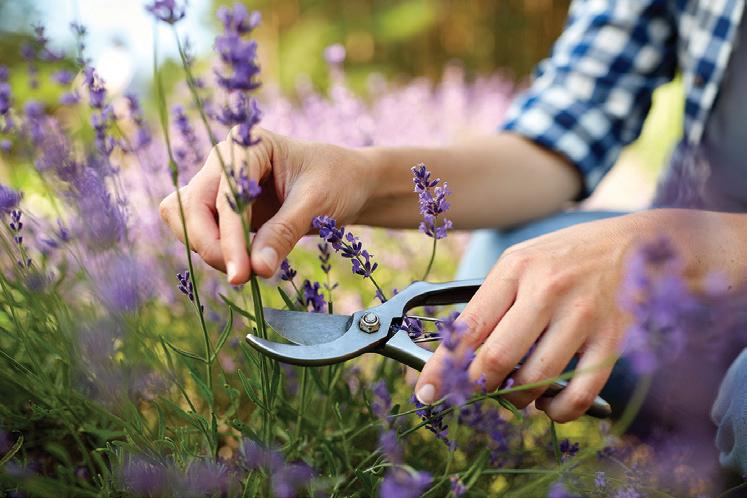
The first workshop, Start Your Own Cut Flower Garden, takes place from 9 to 12:30 p.m. April 6, at The Botanic Garden at Historic Barns Park, in Traverse City. Led by Michelle Shackelford of Leelanau Specialty Cut Flowers, participants will receive a curated starter pack of premium seeds, bulbs and cuttings, along with expert instruction on how to cultivate flowers—even from a windowsill greenhouse. Shackelford, a seasoned grower, shares insights from 13 years of farming, offering tips that span from tulip cultivation to do-it-yourself florals.
From 6 to 8 p.m., on April 17 MGANM will host The Power of Fish Emulsion, also at The Botanic Garden. Presented by William Derouin and CJ Minzey of the Grand Traverse Band of Ottawa and Chippewa Indians, this workshop explores the transformation of fish byproducts into nutrient-rich fertilizer. Attendees will learn about the sustainable processes that enhance soil health and support local fisheries.
Both events underscore MGANM’s mission to promote horticultural education and connect community members through shared gardening knowledge.
Location: 8527 E. Government Center Dr., Ste. 107, Suttons Bay. For more information, call 231-256-9888 or visit Mganm.org.
Sleeping Bear Dunes National Lakeshore offers a stunning escape into nature with miles of golden sand beaches, towering bluffs, lush forests and crystal-clear inland lakes. Located along the shores of Lake Michigan, the park invites visitors to explore its diverse ecosystems and immerse themselves in a rich tapestry of maritime, agricultural and recreational history. The park’s two campgrounds—Platte River Campground and D.H. Day Campground—cater to a wide range of campers. Platte River Campground, open year-round, offers RV-friendly sites with electrical hookups, scenic tent sites, walk-in sites for adventurous travelers
and hike-in group sites accommodating up to 25 campers. Nearby, the White Pine Backcountry Campground provides a more remote experience with six sites accessible via the Platte Plains hiking trail.

D.H. Day Campground, nestled in a wooded area near Glen Arbor, is ideal for rustic camping. It provides easy access to iconic attractions such as the Dune Climb and Pierce Stocking Scenic Drive.
For those craving a true wilderness adventure, the Manitou Islands offer ferry-accessible camping and day trips. South Manitou and North Manitou islands span thousands of acres and are home to historic sites, rare wildlife and endless hiking opportunities.
Location: 9922 W Front St., Empire. For more information, call 231326-4700 or visit Nps.gov/Slbe.

Michigan offers an unparalleled experience for outdoor enthusiasts as the state with the most miles—1,180—of the North Country National Scenic Trail. Traversing both the Upper and Lower Peninsulas, the trail offers a unique blend of urban, rural and wilderness landscapes, all waiting to be explored.
Hikers can follow the trail along the majestic shores of Lake Superior, pass through peaceful farmlands and tree-lined country roads, and pause in welcoming trail towns for a mid-hike meal. The trail meanders through national forests, state parks and recreation areas, offering rich biodiversity and scenic vistas. From the Porcupine Mountains to the Jordan River Valley, each section tells a story of Michigan’s natural beauty.
The trail also intersects with annual events, including the popular Labor Day Mackinac Bridge Walk—an exclusive opportunity to walk across the iconic bridge and count the distance toward trail mileage. The North Country Trail in Michigan is maintained primarily by volunteers from 12 dedicated chapters of the North Country Trail Association (NCTA). The state also proudly hosts 15 official NCTA Trail Towns, enhancing community connection to the trail.
While much of the trail is accessible, hikers should plan ahead. Permits are required in certain parks, and remote stretches, especially in the Upper Peninsula, offer limited restocking points.
Location: 229 E. Main St., Lowell, Michigan. For more information, call 866-HIKE-NCT or visit NorthCountryTrail.org/The-Trail/Michigan.

Modern life often disconnects people from the natural rhythms of the Earth, but science shows that reconnecting can improve overall well-being. Grounding, or walking barefoot on natural surfaces, allows the body to absorb the Earth’s natural electromagnetic charge, which has been found to reduce inflammation, balance cortisol and improve sleep. Sunlight exposure plays an equally vital role, helping regulate circadian rhythms, support vitamin D production and enhance mitochondrial function—key factors in mood, energy and longevity.
Light therapy, including infrared and red light therapy, mimics these natural benefits by aiding cellular repair, reducing stress and relieving pain. Taking simple steps, such as stepping outside for morning sunlight, walking barefoot on grass or sand, incorporating red light therapy or spending time near water, can help restore the body’s natural balance and improve mental clarity.
Nature offers a powerful source of healing. By tuning into its frequencies, individuals can enhance their physical and emotional well-being.
Solara Wellness has been proudly serving Michigan with health services, coaching and education since 2013. Their goal is to help clients elevate their mind and body into a healthier state through holistic, integrative modalities including acupuncture, massage therapy, naturopathic medicine, nutritional coaching, light therapy, herbs and supplements. Location: 644 Migaldi Ln., Ste. 300, Lansing. For more information, call 517-3881507 or visit SolaraWellness.net.
Bringing back passenger rail to Traverse City and Petoskey from Ann Arbor and Detroit is good for Michigan. TAKE ACTION at GroundworkCenter.org/ a2tc-rail-project/


In January, the U.S. Food and Drug Administration (FDA) banned the use of Red No. 3 in food and ingested drugs. The synthetic dye has been primarily used to produce a bright, cherry color in candy, cakes, cookies, frozen desserts and certain pharmaceuticals. The ruling was prompted by a 2022 petition by the Center for Science in the Public Interest, which demonstrated that the coloring agent caused cancer in male rats exposed to high levels. Manufacturers must stop using the dye in foods by January 2027 and in ingestible drugs by January 2028.

An observational study published in Nature Microbiology found that people with high levels of the beneficial Faecalibacterium bacteria were more likely to also have low levels of potentially fatal bacteria, such as E. coli. The researchers analyzed gut microbiome samples from more than 12,000 people in 45 countries.
The samples with high levels of Faecalibacterium also had high levels of beneficial short-chain fatty acids, a byproduct from the breakdown of fiber. These findings suggest that eating high-fiber foods such as vegetables, beans and grains might help protect against harmful bacteria. Additional research is needed to test whether fiber prevents the incidence of infections over a longer time span.


Creatine is a compound made by the body that is found in the muscles and brain. People may take it in supplement form to help build muscle and lower injury risk. A small, controlled study published in the journal Scientific Reports evaluated the use of creatine to clear the mental fog that may result from a bad night’s sleep. Fifteen healthy young adults stayed in a laboratory for two nights, five days apart, during which they were kept awake all night.
One night, they received a single dose of creatine, and the other, they were given a placebo. Cognitive tests were conducted before they took the creatine or placebo, and at three other times during the night. The researchers found that a single, high dose of creatine partially reversed some of the cognitive impacts of sleep deprivation. Further research is needed to determine appropriate doses for maximum effect.

While highly processed foods have been associated with an unhealthy diet, information about the degree of processing has been limited. GroceryDB, a comprehensive database of more than 50,000 food products sold by Walmart, Target and Whole Foods, is the first systematic attempt to quantify food processing.
With the help of a user-friendly interface called TrueFood (True Food.tech), GroceryDB enables consumers to view the level of processing for specific foods, based on a scoring system where 0.0 to 0.2 represents minimally processed items and 0.7 to 1.0 are considered ultra-processed.
The GroceryDB system uses artificial intelligence to examine each product’s ingredient complexity and interactions; presence and quantity of industrial additives; nutritional composition and density; processing methods and techniques; presence of artificial preservatives and enhancers; chemical modifications to the original ingredients; added sugars and their forms; industrial protein sources and modifications; and synthetic micronutrients and fortification.





PolarAid is setting a new standard in holistic wellness with its groundbreaking, hand-held energy tool, designed to support overall well-being. The innovative device is lightweight, portable and easy to use, requiring no wires, batteries, charging or apps. Built on long-recognized scientific principles, PolarAid enhances energy flow to promote optimal health and vitality.
Developed using concepts first demonstrated by Nikola Tesla and Dr. Georges Lakhovsky, PolarAid is engineered to harness naturally occurring energy frequencies and redirect them toward the body. This cutting-edge technology supports a wide range of wellness benefits, including joint flexibility, cardiovascular health, metabolic function, mental clarity and improved sleep. Unlike conventional wellness devices, PolarAid requires no maintenance and offers a lifetime of use with proper care.
Tesla, one of history’s most influential inventors, identified the presence of cosmic energy in 1899. He observed that this energy sustains all living beings, much like food and water. Over time, however, daily stressors and environmental factors diminish the body’s ability to absorb these vital frequencies.
Building upon Tesla’s discoveries, Dr. Georges Lakhovsky developed electromagnetic frequency-based technology in the early 20th century. His pioneering work with the ‘Lakhovsky antenna’ demonstrated how reintroducing natural energy frequencies to biological systems could revitalize and strengthen cells. He successfully experimented with plants and human patients, earning a patent for his device in 1932.
Dr. Dino Tomic has taken Tesla’s and Lakhovsky’s principles to the next level with the development of PolarAid. Using specially designed, copper-based alloy rings arranged in a proprietary configuration, Tomic has created a tool that channels beneficial energy frequencies to restore balance and vitality.
Through years of research and hands-on experience, Tomic has refined a unique protocol for PolarAid users. His comprehensive instruction booklet provides detailed guidance on how to maximize the device’s
benefits for improved wellness. By working closely with users since 2013, he has fine-tuned the approach to ensure optimal results.
“It is important to recognize that PolarAid is based on long-recognized science and does not require belief in any specific philosophy or modality,” says Tomic. “I developed this device to put wellness directly into people’s hands, allowing them to take an active role in their health. PolarAid has helped countless individuals worldwide enhance their well-being, and for that, I credit both Tesla and Lakhovsky.”

Tomic encourages users to test PolarAid’s impact firsthand. He suggests placing the device under a potted plant for several days and observing the difference in its growth and vibrancy. Another recommended experiment involves placing a glass of water over PolarAid for at least 30 minutes before tasting the difference in clarity and smoothness. These simple demonstrations provide tangible proof of the tool’s effectiveness.
PolarAid’s ability to support a wide range of wellness goals continues to attract attention from health-conscious individuals seeking natural solutions. With a strong foundation in scientific research and a commitment to holistic health, PolarAid stands as a powerful tool for those looking to optimize their well-being.
For more information or to place an order, call 450-486-7888 or visit PolarAidHealth.com. See ad page 23.

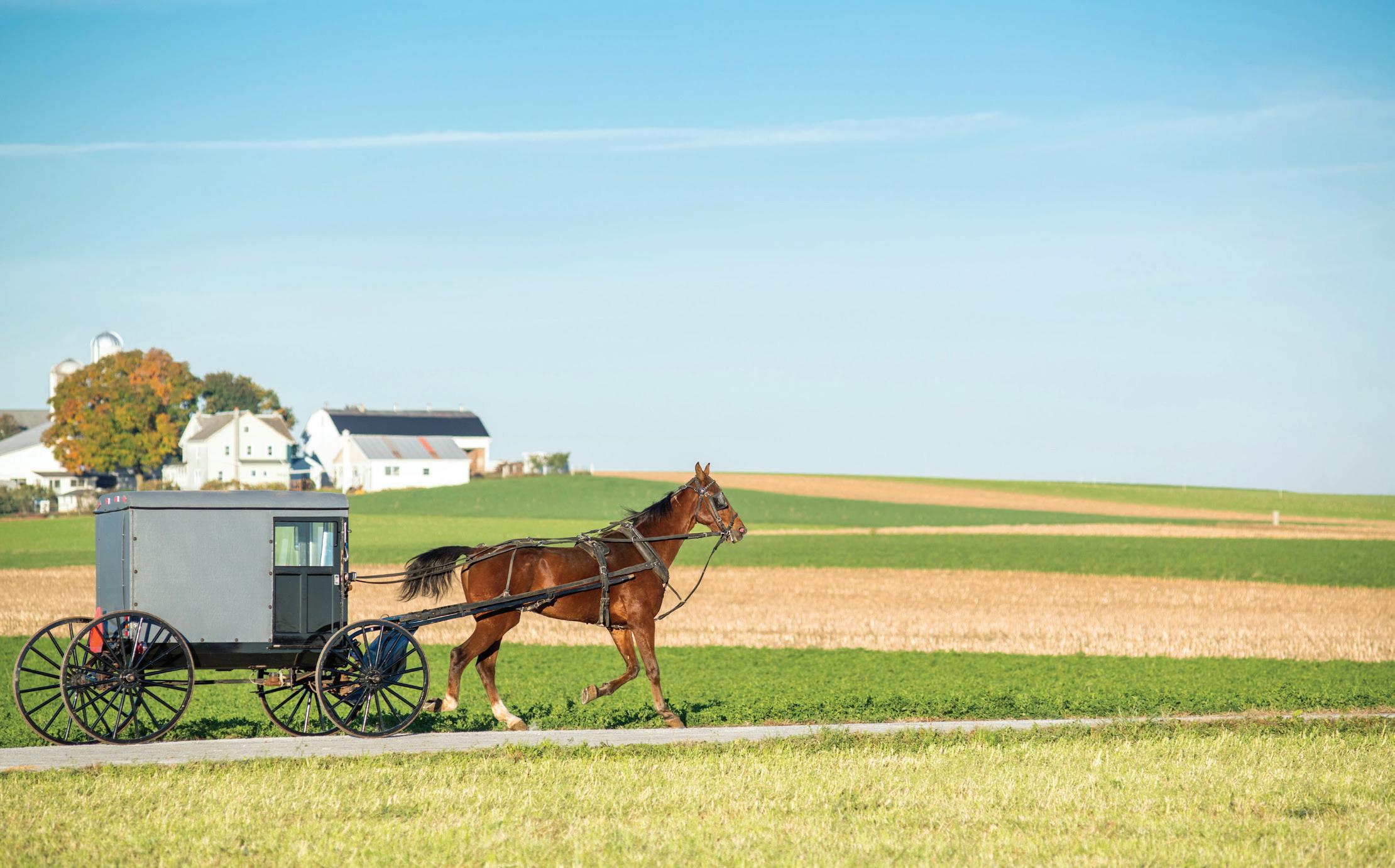
Located in the heart of Michigan’s Amish country, just north of Mio in Oscoda County, Country Corner Bulk Foods offers a shopping experience unlike any other. Operated by the Bontrager family since its inception, the store has become a destination for locals and travelers alike seeking high-quality bulk goods, wholesome ingredients and a taste of traditional living.
Country Corner Bulk Foods is best known for its expansive selection of flours—including organic and specialty varieties like crushed wheat—along with a diverse range of baking supplies, spices, grains and sweeteners. Shoppers can also find a robust stock of vitamins, supplements, herbs and essential oils.
The store’s deep connection to the local community is evident in its inventory, which often includes regionally sourced goods. Visitors may find Michigan-made maple syrups, farm-fresh eggs, seasonal produce and homemade jams and jellies. Many
items come from the Midwest, including neighboring Ohio’s large Amish community, reinforcing the store’s dedication to authenticity and regional flavor.
Located in a picturesque rural setting surrounded by forests and outdoor recreation areas, Country Corner Bulk Foods is more than a grocery store—it’s a glimpse into a simpler way of life. Its friendly, welcoming atmosphere reflects the values of the Amish and small-town culture, making it a favorite stop for families, home bakers and adventurers exploring the AuSable River or enjoying a weekend getaway.
Visitors praise the store not only for its unique offerings, but also for its value. Bulk buying options make it easier for shoppers to stock up on essentials at competitive prices, whether they’re preserving seasonal produce, feeding a large family or simply seeking pantry staples that are hard to find elsewhere.
Whether preparing for canning season, on

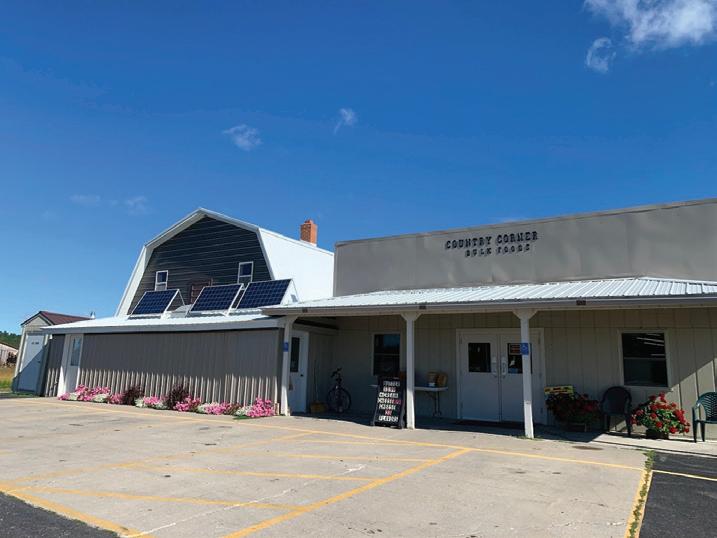

the hunt for old-fashioned baking supplies or just in search of a peaceful detour off the beaten path, Country Corner Bulk Foods delivers an experience steeped in tradition, quality and community.
Location: 1284 W. Kittle Rd., Mio. For more information, call 989-826-6063 or visit Just PlainBusiness.com/Country-Corner-BulkFoods. See ad page 8.
by Carrie Jackson
Acircular economy mimics nature by keeping products and materials in circulation and regenerating their resources. According to the World Health Organization, it offers an avenue to sustainable growth, good health and decent jobs
while saving the environment and its natural resources. Although this is not a new concept, an increasing number of businesses across various industries are acknowledging our climate crisis and renewing their dedication to sustainability.

Consumers, too, are recognizing their role in a circular economy and becoming more mindful of how they use their resources. By making conscious choices about their purchases, managing waste and cutting back on consumption, they can positively impact the planet, their wallets and communities at both a local and global scale.
Claire Potter is the founder of One Circular World, and author of Welcome to the Circular Economy: The Next Step in Sustainable Living. She notes that a circular economy is best described as a series of systems that work like nature does. “No waste is produced in nature, and everything flows,” she says. “Anything not required by one species is used by another or breaks down to provide nutrients for the earth. Nature works in balance with itself, and humans are the only species on Earth that doesn’t do that.”
A circular economy can provide this balance across multiple sectors. “By using a waste stream of material for another purpose, ensuring that the earth is nourished with organic waste, using materials for as long as possible before they are broken down to be used for another purpose, and ensuring that renewable energies are used to make and transport our products, the circular economy feeds into all elements of our lives,” explains Potter.
Consumers can start by cutting down on online shopping, which reduces packaging and prevents unwanted items ending up in landfills. “It is very tempting to click on something and have it arrive the next day, but online shopping is notorious for having excessive
amounts of packaging,” says Potter. “See if orders can be combined and packed together, or buy the same item from a physical store where you can try things on before purchasing them. Large volumes of clothing purchased online is returned, and, unfortunately, it is cheaper for the brand to ditch the item than to put it back into their supply chain.”
Although recycling is often touted as a cornerstone of environmental stewardship, Potter asserts, “Recycling won’t save us. We have had the ‘reduce, reuse, recycle’ mantra since around the first Earth Day in 1970, and yet our consumption-based industries have somehow encouraged us to focus on the ‘recycling’ element alone. In circularity terms, the first two are far higher up the hierarchy of desirable actions. Of course, recycling plays a part, but it is a deeply inefficient system.”
As an example, Potter points to the UK where “only around 9 percent of the plastic sent for recycling ever returns as a new item, and the rest ends up being landfilled or incinerated. In some cases, recycled material is exported to developing countries, which increases the risk of it being dumped into various ecosystems.”


Potter suggests a revamping of the old mantra to include refuse, repair, redirect, regenerate and refill. “Recycling is often a very energy- and transport-heavy system, so in circularity terms it is far better to reduce and reuse before you get to recycling, which should be the last resort,” she explains. “Buy the best possible option for longevity, repairability and upgradability; even if it is more expensive, that initial investment can pay out multiple times.”
While it can seem overwhelming to responsibly manage waste, businesses like TerraCycle are stepping in to help by providing Zero Waste Boxes and other waste-management solutions to recycle almost everything—from everyday kitchen waste and cleaning supplies to cosmetics
packaging and more. These free and paid solutions are available to individuals, offices, schools and facilities.
Established in 2001, TerraCycle developed its own platform of circularity called Loop. By partnering with retailers (Charlie Banana), brands (Coca-Cola, Evian and Nutella) and supply partners (FedEx), they enable the sale and collection of reusable and returnable versions of conventional, singleuse products, making the process convenient and accessible. People can order boxes from the company to fill with obsolete toys, small appliances, water filters, fabric, candy wrappers and other challenging items, and TerraCycle will take care of the rest.
“What makes something locally recyclable depends on whether your local recycling





company can make a profit recycling it,” says TerraCycle CEO Tom Szaky. “If the cost of collecting and processing the waste is lower than the value of the resulting raw material, it will likely be locally recyclable. If the costs are higher, then it likely won’t be. Our specialty is recycling hard-to-recycle items that would typically go to landfills or incinerators—everything from cigarette butts, to beauty empties, to spent toothpaste tubes.”
Circularity has to start with production, says Mary Beth Schaye, a zero-waste consultant and vice president of the Collective Resource Compost Cooperative, in Evanston, Illinois. “When you first design something, you have to think about what’s going to happen to it in the end. It’s a very cradle-to-grave idea,” she points out.
Circularity goes against the current trend of planned obsolescence, a business strategy that encourages consumers to continually buy new products to replace those that become outdated or break down quickly. In contrast, there is a growing interest in a policy known as “extended producer responsibility”, which makes manufacturers take responsibility for their products’ entire life cycle, including the post-consumer stage.
Schaye can’t think of a better way to prevent waste than by simply reducing new purchases. “It can sometimes feel like a burden for consumers to make sure everything goes in the right place,” she says. “It’s better to not have that thing to get rid of in the first place.”
Citing transportation as a barrier, Schaye notes that circularity works best when the circle is smaller. She urges people to look for repurposing solutions within their own communities, suggesting, “If there’s something that you are throwing out habitually, like extra food, boxes or containers, see if there’s someone else who can benefit from it. We encourage people to identify their own reuse pipelines.”

Feeding America estimates that people waste 92 billion pounds of food annually in the United States, filling up landfills and taxing the environment. “When food scraps go to landfill, they create methane, which is a greenhouse gas,” Schaye attests. “Minimizing methane is more impactful than carbon dioxide on reducing the global temperature.”
Composting is an example of circularity that people can understand. “We grow food; we eat the food; and we have food waste that gets composted so that it can enrich the soil to grow more food,” Schaye explains. “It’s easy and immediate. Most people have an option for composting, but they might not know about it.”
A way to reduce food waste is to plan meals ahead of time and avoid over-shopping at the grocery store. “If you know you’re going on vacation or will be eating out several times in the next week, then don’t buy anything that will expire while you’re gone,” Schaye counsels. “If you do have extras, see if there’s a neighbor or community fridge
that can take it. When eating out, try not to order more than you need, but if you think you will have leftovers, then bring your own containers to transport them home.”
Produce doesn’t have to look perfect in order to be consumed. A bruised peach might make a delicious pie, and overripe bananas are the key ingredient to homemade banana bread. If something is getting close to its expiration date, there may be a way to save it. “If you stock up on apples at the farmers market, make sure you properly store the extras to enjoy later. We’ve lost the old-school wisdom of how to preserve food. Freezing food and using the right containers can give it new life,” says Schaye.
Consumers can also become more mindful of supporting institutions that practice circularity. Potter encourages people to look at their bank accounts, investments and pensions. “Often we do not know where our money goes after we deposit it with our bank. We could be trying our best to live as circularly as possible but have no idea that our hard-earned cash is being used to fund fossil fuel companies, for example. Do a bit of digging into where your money goes, and if you don’t like the answer, switch your money to an ethical bank investment group,” she suggests.
Other changes, such as switching to an energy provider that uses a 100 percent green tariff from renewable energy sources, will have both long- and short-term effects. “Your energy supplier will likely already have a renewable option, so switching might not be too hard and will help to invest in futureproofed systems,” says Potter. “If each of us does what we can, our strengths will overlap, eventually creating a beautiful circle of circularity.”
Carrie Jackson is a Chicago-based freelance writer and frequent contributor to Natural Awakenings. Connect at CarrieJacksonWrites.com.

by Rachel Cara
As wireless technology expands across the globe, a growing concern emerges from the electrosmog now saturating the environment. From satellites transmitting high-frequency E-band signals to 5G cell towers and smart devices in homes, this invisible pollution is raising red flags among experts advocating for public health. One of the most prominent voices in this field, Arthur Firstenberg, author of The Invisible Rainbow, recently passed away. His pioneering work traced the correlation between electromagnetic fields and chronic health conditions, shedding light on a threat many still overlook.
Firstenberg’s final publication, The Earth and I, deepened the conversation on how electricity and modern technology have reshaped biological systems. With a background in medicine, he spent decades researching the biological effects of exposure to artificial electromagnetic fields. His passing marks the end of an era, but his legacy continues to inspire those raising awareness about

the escalating presence of wireless frequencies. Much of his work remains in his books and can be found at CellPhone TaskForce.org
Wireless radiation, especially pulsed radio-frequency (RF) radiation, has surged in recent years. The widespread use of 5G technology is a key contributor, emitting signals up to 100 times stronger than those of previous generations. These high-frequency emissions are now prevalent in urban, suburban and rural areas, including all corners of Northern Michigan. Yet, experts caution that the most immediate risks often lie within people’s own homes.
Cell phones, smart meters and WiFi routers emit significant levels of RF radiation. Newer smartphones, especially those with
5G capabilities, continuously emit strong signals, even when idle. Combined with smart appliances and smart thermostats that sync with utility meters, these devices create an inescapable web of wireless exposure.
Unlike WiFi, which users can turn off at night to minimize exposure, smart meters installed by utility companies operate 24/7. These meters have replaced analog models on homes and businesses, transmitting data back to service providers at regular intervals. Experts point out that while convenient, they add to the body’s cumulative radiation load—an effect that may be especially detrimental during sleep, when the body relies on deep rest to heal and recover.
Rachel Cara, founder of MI EMF Investigator, offers specialized in-home surveys to identify and mitigate exposure to wireless radiation, serving all of Northern Michigan. For more information, call 231-714-0477 or visit EMFInvestigator. com. See ad on back cover.

by Marlaina Donato
Acompromised gut can make us susceptible to a host of conditions, including depression, chronic disease and viruses such as COVID-19. To fortify us against such illnesses and generally strengthen the digestive tract, prebiotic foods like asparagus, dandelion greens, bananas, leeks and Jerusalem artichokes can be quite helpful.
“Prebiotics are like fertilizer for your gut garden, helping it flourish so your whole body can thrive,” explains Donna Schwenk, author of Cultured Food for Life. “When you consume prebiotics, they pass through the digestive system undigested and become fuel for the friendly bacteria in your colon. This process helps the ‘good guys’ thrive, increasing their numbers and supporting a healthy balance of gut flora.”
A harmonious mixture of prebiotics and beneficial intestinal flora—known as synbiotics—can help ward off illnesses, lower “bad” cholesterol and reduce chronic gut inflammation, which is linked to the development of tumors and colorectal cancer. A review published last year in the journal Foods suggests that adding prebiotics to the diet could improve cognitive function, relieve symptoms associated with inflammatory bowel disease and osteoporosis, and even resolve gastrointestinal disorders that plague up to 70 percent of individuals on the autism spectrum.
Adding healthful prebiotics can be as simple as dropping a few raspberries, blueberries or strawberries into unsweetened yogurt or kefir. Dandelion greens, which are packed with inulin, can be tossed into salads, sautéed with a little garlic and olive oil, or added to smoothies. Leeks, which are mild and sweet, can be enjoyed in soups, sautés, quiches, miso broth or cream dips. Other delicious prebiotic ingredients include bananas, flax
and chia seeds, cacao nibs, lentils, oats, barley, chicory and jicama root, almonds, seaweed and avocados.
Schwenk suggests an easy gourmet dish that features roasted asparagus, apples and Jerusalem artichokes over a bed of greens tossed with a probiotic-rich salad dressing. She notes, “Apples are rich in pectin, a soluble fiber and powerful prebiotic that
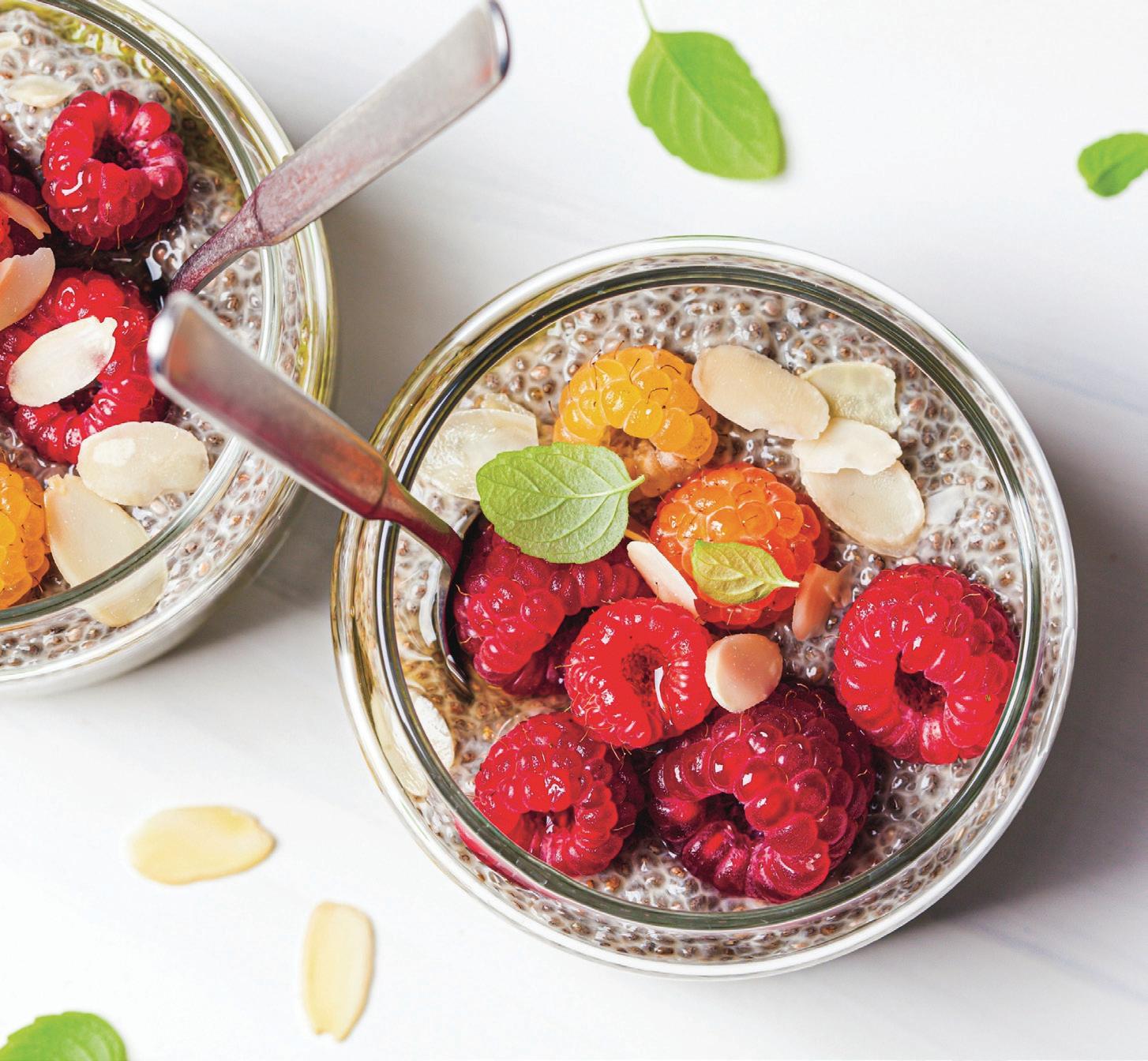
ferments in the gut and feeds beneficial bacteria like Akkermansia muciniphila, which play a vital role in maintaining and strengthening the gut lining.”
According to Schwenk, refrigerated kimchi and naturally fermented sauerkraut are rich in Lactobacillus plantarum, a powerful probiotic that thrives during fermentation, breaking down sugars and promoting a healthy microbiome. Benefits include nutrient absorption, mood support and enhanced immune function.
Renee Barasch, a certified digestive specialist and owner of Digestive Health Solutions, concurs that these probiotic foods can aid in balancing blood sugar, insulin resistance and digestive woes like constipation, diarrhea, bloating, heartburn, acid reflux and gas. On the other hand, she cautions that fermented ingredients can be too high in histamine and thus cause uncomfortable digestive issues for some people.
“Folks need to keep in mind their unique gut microbiome,” says Barasch. “Some people will feel gassier or bloated from some of these foods, depending upon their gut health. I use the BiomeFx stool test to identify the presence of histamine, estrogen, hydrogen sulfide and other things that could cause gut issues.”
Chocolate chips blended with smoked sea salt for a dark and rich salted chocolate flavor.
of these as your favorite chocolate chip
Findings published in the Journal of Advanced Research in 2020 suggest that certain types of gut flora could play a role in the development of inflammatory bowel diseases. Prebiotics like garlic can become antagonists for those that have an overabundance of certain types of intestinal microbiota. Garlic can also lead to high concentrations of hydrogen sulfide, which can contribute to gut inflammation.
Schwenk advises, “Introducing prebiotic foods gradually is important to avoid stomach discomfort, especially if you’re new to them. Prebiotics feed your gut bacteria, which can produce gas as they ferment the fibers, so a slow and steady approach is best.”
She recommends eating prebiotics together with probiotics like yogurt, kefir or kimchi so the gut can handle the increase in fiber more effectively. Begin with one or two tablespoons per meal to slowly introduce the beneficial bacteria into the system. “Kimchi and kraut are versatile,” Schwenk remarks. “You can enjoy them as a side dish, mix them into fried rice or even stir them into soups after cooking to preserve the live probiotics.”
Marlaina Donato is an author, artist and composer. Connect at Wild flowersAndWoodSmoke.com.
*Makes 30 cookies* 1/2 Cup Unsalted Butter, at room temperature 1/2 Cup White Sugar 1/2 Cup Granulated Brown Sugar 1 Large Egg 1 Teaspoon Premium Vanilla Extract, Madagascar
1/4 Cups All-Purpose Flour 1/2 Teaspoon Baking Soda 1/4 Teaspoon Kosher Sea Salt Flakes




This smoothie is packed with gut-healthy probiotics from kefir and antioxidants from blueberries, making it a powerful tool to support urinary tract health and boost the microbiome. Kefir provides a variety of good bacteria, while blueberries and their juice contain compounds that can help prevent bacterial growth by depriving bacteria like E. coli of the iron they need to thrive.
½ small banana, frozen into chunks
¾ cup kefir
½ cup coconut milk
½ tsp vanilla
1 cup frozen blueberries
1-2 tsp honey
Place all ingredients in a blender and blend until smooth. Pour into a glass and enjoy immediately.
Optional: Add a prebiotic powder like Prebio Plus to enhance good bacteria growth. Start with small amounts to avoid discomfort as the gut adjusts.
Recipe and image courtesy of Donna Schwenk.

This easy-to-prepare salsa is bursting with flavor and health benefits. Tomatoes are an excellent source of the antioxidant lycopene, while garlic and onion are prebiotics. The recipe also calls for a probiotic culture to support gut health with live probiotics. It is a perfect way to introduce cultured foods to hesitant eaters.
6 large ripe tomatoes
2 small onions
2 small, red or green peppers
2 4-oz cans chopped green chilies, with juice
2 cloves garlic
2 tsp paprika
2 tsp ground cinnamon
4 tsp chipotle powder
1 Tbsp raw sugar or Sucanat
⅛ tsp veggie starter culture (or 2 Tbsp kefir whey)
1 tsp Celtic sea salt
Combine all ingredients, except the starter culture, in a blender or food processor until chunky or smooth, depending on preference.
Stir in the veggie starter culture or kefir whey, making sure it is well incorporated.
Transfer the salsa to jars, seal with a secure lid and ferment at room temperature. After two days, store in the refrigerator and enjoy.
Recipe and image courtesy of Donna Schwenk.
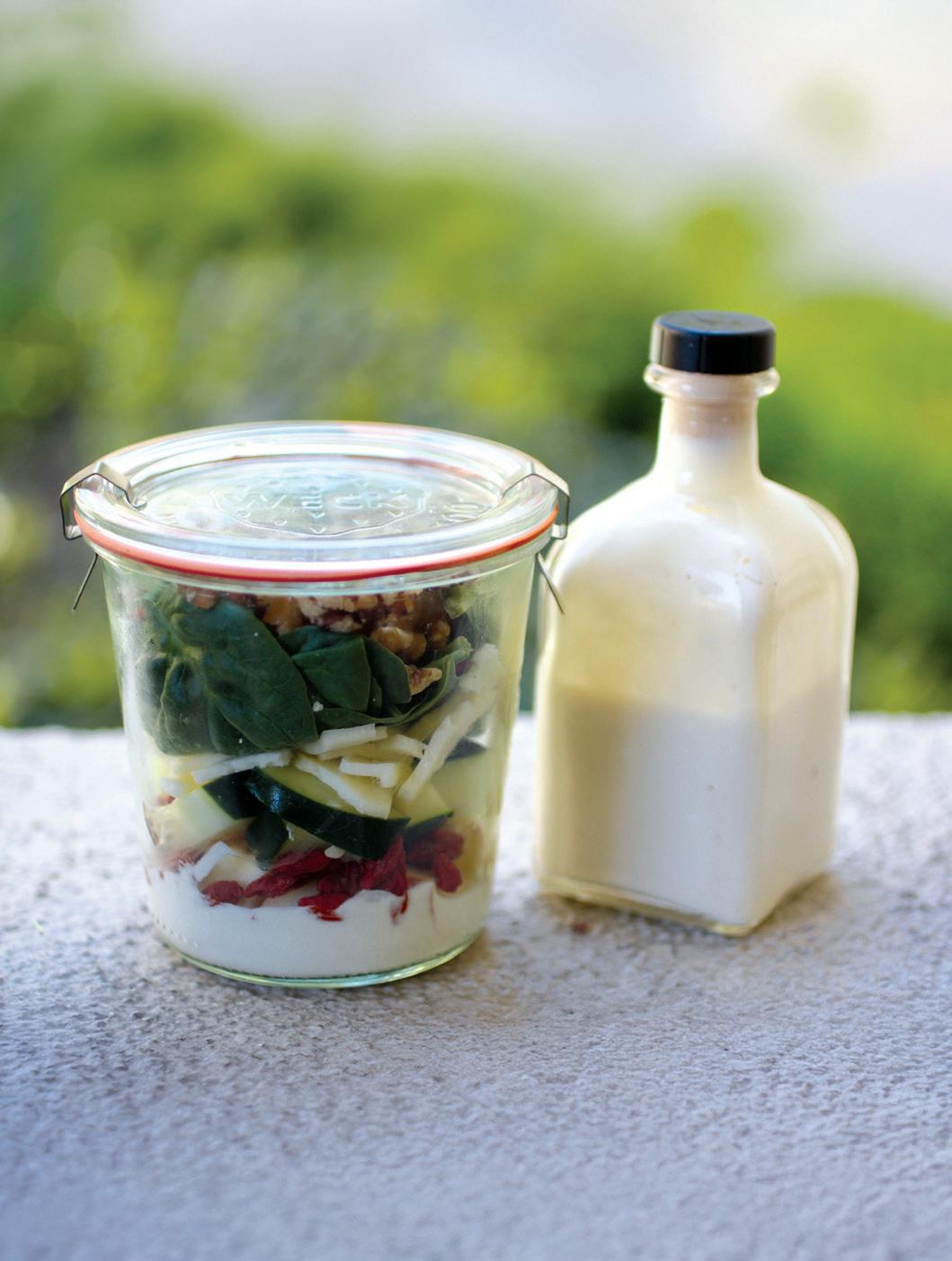
Turn any salad into a probiotic powerhouse with this creamy, tangy dressing.
YIELD: 2 SERVINGS
½ cup kefir cheese (see below)
2 tsp garlic powder
2 tsp onion powder
2 Tbsp kombucha or apple cider vinegar
2 Tbsp apple juice
½ Tbsp honey
To make kefir cheese, strain 2 cups of kefir through a fine-mesh strainer lined with cheesecloth or a nut milk bag over a bowl. Let it strain in the refrigerator for 12 to 24 hours until thickened, then transfer the cheese to a container and store for up to three weeks. The liquid whey can be saved for smoothies, soups or fermenting.
Whisk all ingredients together in a small bowl until smooth. Serve immediately or refrigerate for up to 3 weeks.
Recipe and image courtesy of Donna Schwenk.
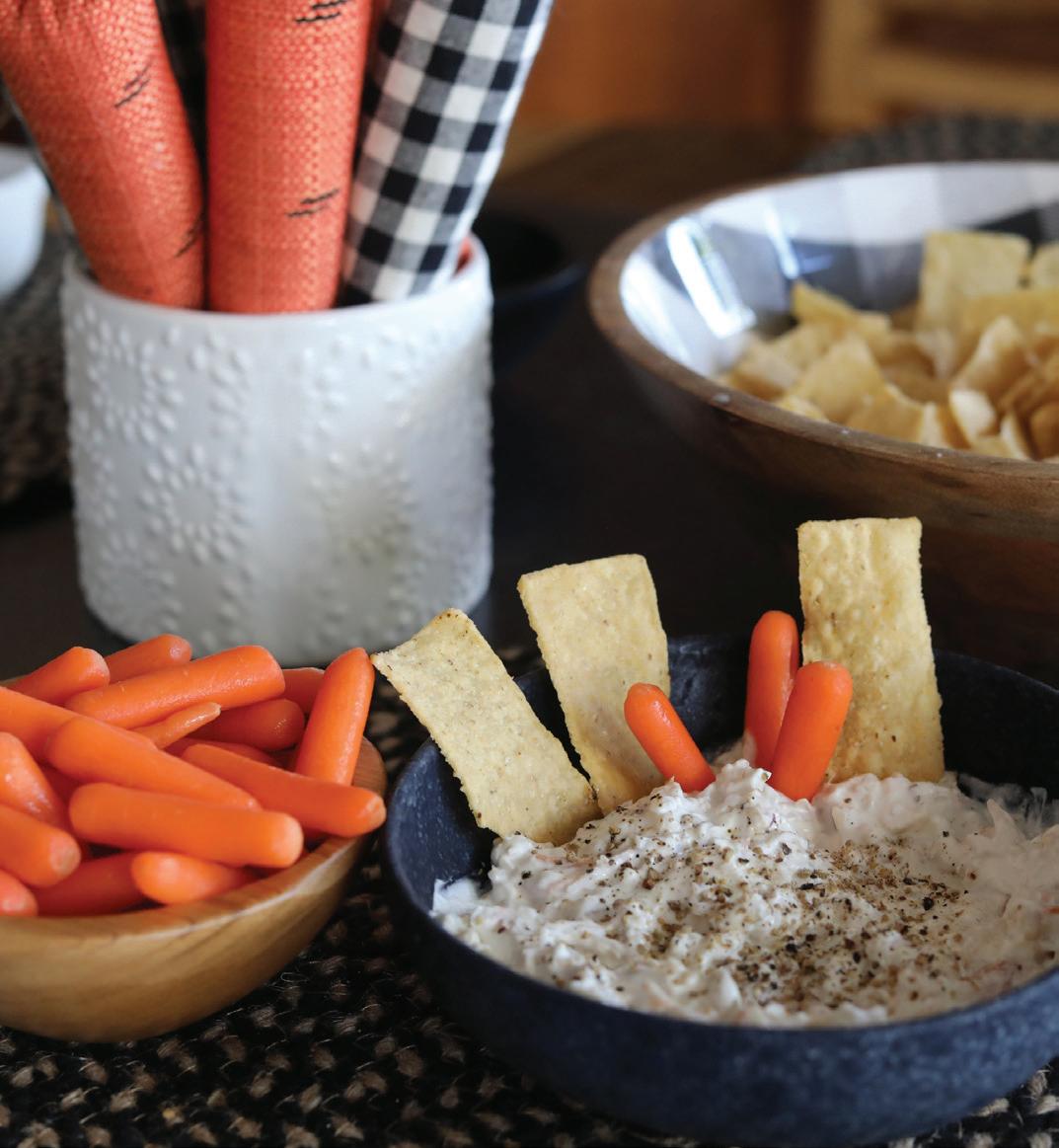
Loaded with billions of probiotics, this dip is perfect for any occasion. It’s quick to make and perfect with sprouted chips or fresh veggies.
YIELD: 6 SERVINGS
½ cup sauerkraut, drained (or kimchi)
1 cup kefir cheese (see below)
Optional Toppings
1 tsp black pepper
1 Tbsp toasted sesame seeds
1 Tbsp fresh parsley, chopped
To make kefir cheese, strain 2 cups of kefir through a fine-mesh strainer lined with cheesecloth or a nut milk bag over a bowl. Let it strain in the refrigerator for 12 to 24 hours until thickened, then transfer the cheese to a container and store for up to three weeks. The liquid whey can be saved for smoothies, soups or fermenting.
Mix the sauerkraut and kefir cheese in a bowl until well combined. Add black pepper, sesame seeds or parsley, if desired.
Recipe and image courtesy of Donna Schwenk.
by Zak Logan

The thought that a few extra minutes of movement each day could transform our health, energy and happiness is the motivation behind the American Heart Association (AHA) promotion of April as Move More Month. For avid fitness enthusiasts, as well as those looking to take the first step toward an active lifestyle, this is the time to celebrate movement in all its forms.
Physical inactivity has become a creeping health crisis. According to guidelines published by the U.S. Department
of Health and Human Services, nearly 80 percent of adults fail to meet the recommended levels of aerobic and muscle-strengthening activity. The AHA reports that cardiovascular and heart disease affects nearly half of all American adults, causing direct and indirect costs that are projected to reach $1.1 trillion by 2035, according to RTI International, a nonprofit research institute.
The Harvard T.H. Chan School of Public Health reports that a healthy lifestyle, which includes regular exercise, may prevent 80
percent of sudden heart attacks and cases of coronary artery disease, as well as 50 percent of strokes caused by blood clots. The health benefits are reason enough to hit the gym or go out for a morning jog. Move More Month inspires us to incorporate movement into a busy life and, most importantly, find joy in an active lifestyle.
There is no one-size-fits-all formula for fitness, and Move More Month is an opportunity to explore the options that best
match our personality, lifestyle and fitness level.
• Fitness boot camps are high-energy workouts in an energizing environment that welcomes beginners and experienced fitness lovers alike. Accept the challenge with a local trainer, at a CrossFit gym or with the guidance of an app like BurnFit.
• Dance classes such as Zumba, salsa or hip-hop can be fun and immersive workouts that don’t feel like exercise at all.
• Yoga in the park combines mindfulness with a great stretch and a dose of natural vitamin D. Many communities offer free sessions.
• Water sports like kayaking and paddleboarding develop balance, core strength and endurance while communing with nature.
• Social sports, including golf, pickleball and tennis, not only burn calories but also offer camaraderie and fun.
• Daily walks are the cornerstone of an active lifestyle. Try to reach 10,000 steps with walks around the neighborhood or local park, remembering to compound the benefits by using this

time outdoors to calm the mind and invigorate the spirit.
• Team sports like soccer, basketball or softball offer wonderful workouts combined with competitive team play at local parks or sports clubs.
Making the shift from a sedentary lifestyle can feel daunting, but every huge transformation starts with a single step. Try these practical tips to ease into an active lifestyle.
• Set achievable goals. Start with 10 minutes of movement a day and gradually extend the time.
• Integrate movement throughout the day. Stretch while watching TV, park the car farther from work or stores to take extra steps, or choose the stairs instead of the elevator whenever practical.
• Use technology. Fitness trackers by Fitbit, Apple, Samsung and Garmin help monitor progress, set challenges and offer that extra motivational nudge.
• Applaud everyday wins. Even tiny changes matter. Try a new dance move each day. Stretch in the mornings or set
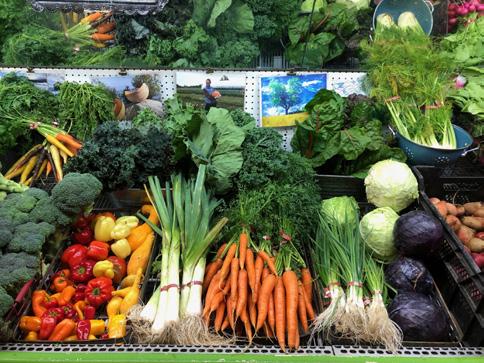

reminders to get up and move during long work hours.
• Avoid perfectionism. What matters is consistency. All movement is progress, so celebrate it.
We often think of exercise as a solo endeavor, but getting others involved can be a great tool for staying motivated. Local communities are brimming with opportunities to connect with others, offering interactive activities such as running clubs, group fitness classes, sports leagues and cycling tours. Many neighborhoods have online groups or bulletin boards that promote meetups, classes and fitness events.
Movement isn’t just about physical health; it’s about the joy of discovering what the body can do, the pride in building a healthier routine and the sense of belonging to a group of like-minded individuals. Don’t wait for tomorrow to get started. Lace up, stretch out and start moving today.
Zak Logan
freelance health writer dedicated to getting back to basics.



by Madiha Saeed, M.D.

According to the Mayo Clinic, fibromyalgia is characterized by widespread musculoskeletal pain and fatigue, accompanied by sleep, memory and mood problems. It affects about 4 million Americans and is most often diagnosed between the ages of 35 and 45. Adult women are twice as likely as men to suffer from this chronic, debilitating condition.
“Although the exact cause of fibromyalgia is not known, many researchers have come to believe that it results from an overactive nervous system that misfires, making pain signals stronger and more persistent. It appears that the brain and nerves are not processing pain messages correctly, leading to heightened sensitivity and discomfort. Traditionally, treatments have been focused on managing symptoms rather than addressing the root causes, but exciting advances in medical research and treatment are on the horizon,” says Jane Hogan, a functional medicine certified health coach, founder of the Wellness by Design podcast and host of the Becoming Pain-Free 2.0 Summit last November.
Dr. Evan Hirsch, a functional medicine practitioner and CEO of EnergyMD, states, “Fibromyalgia is an autoimmune disease, or at least inflammation, and all inflammation is essentially autoimmune. If that autoimmunity ends up attacking the muscles, you get fibromyalgia. Essentially, the immune system is reacting to something that is in the body. When that something is in the muscles, the immune system is attacking that thing in the muscles.”
Hirsch suggests that the offenders might be a combination of heavy metals, chemicals, molds, infections and nervous system dysfunction. He stresses that if symptoms began after COVID, then it is important to address that infection. Bartonella bacteria, which are spread to humans by fleas, body lice or sand flies, can live in the muscles, causing inflammation—and pain—in the tendons and ligaments.
Stress is a major risk factor for many chronic health conditions. According to Hogan, “A key player in calming fibromyalgia pain is the vagus nerve, which activates the nervous system’s parasympathetic state, or relaxation response. A promising area of research is investigating non-invasive vagus nerve stimulation as a safe and effective mode of pain management for fibromyalgia patients. Methods of self-stimulation of the vagus nerve include deep diaphragmatic (or belly) breathing, body movement, reflexology, gargling, humming and cold-water immersion. Trauma can also contribute to chronic pain, so incorporating more mind-body techniques can improve overall health and wellness.”
Traditionally used for opioid addiction, naltrexone has been studied for its potential to reduce pain and inflammation in fibromyalgia. A 2023 systematic review published in the Journal of Pain Research reported that low-dose naltrexone appears to be effective and safe in the symptomatic management of fibromyalgia. The researchers noted that additional studies were needed to determine dosage, frequency and duration recommendations.
The gut microbiome houses 70 to 80 percent of the body’s immune cells. “Anything that is in the gut that is not supposed to be there, including foods, can cause inflammation, and inflammation in the gut leads to inflammation in other parts of the body, which can cause pain in the muscles and fibromyalgia,” says Hirsch. “Gut health and the health of the microbiome is critical for lowering chronic inflammation and pain.”
He recommends focusing primarily on fiber-rich foods, healthy fats and lean protein, as well as prebiotic, probiotic and post-biotic foods. Removing ultra-processed foods and common food sensitivities can also help to lower inflammation in the gut.
A fecal transplant from a healthy donor may be beneficial to replace vital gut bacteria; however, the transplant may have to be repeated multiple times over extended periods, says Hirsch. In his experience, patients are unable to keep up the treatments for a variety of reasons. “If they don’t keep doing it, they aren’t going to continue to get the benefits,” he points out.
The world of fibromyalgia treatment is rapidly evolving with new therapies, from regenerative medicine and targeted drug therapies to integrative mind-body treatments. It is exciting to see this new shift toward personalized, effective care that addresses physical, mental and emotional aspects of fibromyalgia, bringing new possibilities for pain relief and an improved quality of life.
Madiha Saeed is a holistic, functional and integrative doctor in Naperville, Illinois, and director of education for Documenting Hope and KnoWEwell.
on Nikola Tesla’s and Dr. Lakhovsky’s works
Everyone needs more VITALITY - there is no limit!
Hundreds and hundreds of authentic, compelling testimonials — PolarAid® encourages the overall health of the body:
“This will be the fourth PolarAid I’ve purchased! I fully believe in this product and its healing power! I’ve given them to family members and we’ve all had great success with it.” C.A.T. (Vista, CA)
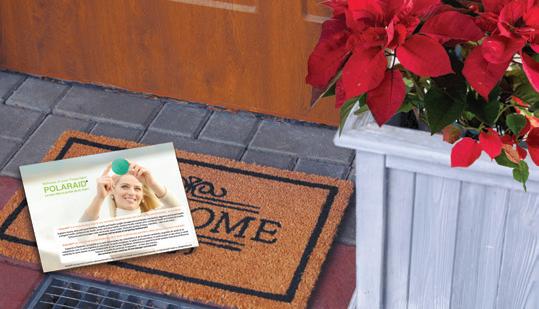

is the gift that keeps on giving” B.D. (New Forest, UK) FREE shipping on orders of 100$ or more!
“A lot of people are wary about hypnosis, they think it’s kooky or witchcrafty, but really it is a very comfortable relaxation...and it onlyhelps you do what youwant to do.” says onesatisfied client.
With a 95% Success rate, Ariana Joy Arlen guarantees smoke cessation in just ONE visit – and unlike edications, there are no unwanted side-effects!
Make any positive change you’ve been wanting to make!
Ariana Joy Arlen is a certified hypnotherapist, & creator of ‘Free at Last! – A Joyful Journey’


by Christine Connors
Cooking with children teaches them valuable life skills, strengthens family bonds and promotes healthy eating habits. “It’s important to create positive experiences in the kitchen with our kids as early as possible. We want them to feel that the kitchen is a place they belong,” says Katie Kimball, creator of the Kids Cook Real Food eCourse and #LifeSkillsNow video workshops.
A study published in the Journal of Nutrition Education and Behavior involving more than 1,200 third-graders, of which 49 percent were overweight or obese, found
that when the children were invited to prepare food with their families, they were more willing to taste a vegetable and ended up consuming more fruits and veggies, which are essential to health and the prevention of disease.
Here is a guide on how to cook healthy meals with kids while also teaching them safety and hygiene protocols, measuring tips, fine-motor skills, time management and an appreciation for the effort, dedication and fun that is involved when creating a delicious meal for the family.
Good hygiene practices are essential in food preparation. “Teach your children to wash their hands thoroughly before and after handling food, and to tie their hair back,” says Lynn Feder of Lynn’s Life Bakery. “Keeping the kitchen clean, including washing fruits and vegetables, cleaning work surfaces and using separate cutting boards for raw meat and vegetables is very important. Take care when using knives and electric gadgets. It is easy to make mistakes, so always make sure you are safe.”

Cooking together provides an excellent opportunity to teach kids about measuring ingredients. Show them how to use measuring cups and spoons accurately. This not only helps them understand recipes but also reinforces basic math skills such as fractions and volumes.
Tasks like peeling, chopping, stirring and mixing help develop fine motor skills. Provide age-appropriate tools and tasks that allow children to practice these skills safely. For younger kids, activities like tearing lettuce, mashing potatoes or stirring batter can be both fun and educational. “You can engage your little ones in the kitchen as early as 18 months to 2 years old, cutting bananas or pouring milk on oatmeal,” Kimball points out.
Cooking requires multitasking and time management. Teach children how to read a recipe from start to finish before beginning. Working together, plan out the steps and determine which tasks need to be done first. This helps them learn to organize their time and develop a sense of responsibility.
Involving kids in cooking helps them appreciate the effort that goes into preparing a meal. “For ages 11 and above, taking over one meal a week helps them develop time management skills and executive functioning,” explains Kimball. Encourage them to taste their creations and share them with the family. This not only boosts their confidence but also instills a sense of pride and accomplishment.
“The most important thing is to have fun in the kitchen,” says Feder. “I love to decorate my food. When something looks beautiful our brains tell us that it looks beautiful and delicious. Try it—it is so much fun.”
Involving kids in the kitchen fosters a lifelong appreciation for healthy eating and gives them the tools they need to be confident and capable in the kitchen and beyond. Start with simple recipes and gradually introduce more complex tasks as their skills grow. Enjoy their meals together as a family, and praise them for their culinary contributions.
• Rainbow Veggie Wraps: Have the kids choose colorful veggies to fill whole wheat wraps. They can practice chopping, grating and assembling.
• Fruit and Yogurt Parfaits: Layering fruit, yogurt and granola in a clear glass is a fun and nutritious activity that promotes creativity and fine motor skills.
• Mini Pizzas: Use whole wheat English muffins as the base and let kids add their favorite healthy toppings. This is a great way to encourage them to try new vegetables.
Christina Connors is a writer, singer and creator of a YouTube series for children. Learn more at ChristinasCottage444.com.






by Ruth Roberts, DVM, CVA, CVH, CVFT, NAN

Ahealthy urinary system in cats depends on a balanced diet to prevent issues like feline lower urinary tract disease (FLUTD), which affects the urethra and bladder of cats, creating major health risks and causing discomfort. Affected cats may scream in pain, pass very tiny amounts or strain to urinate. Some start urinating outside the litter box, usually on cool places like bathtubs or tile floors, or have blood in their urine.
Poor food choices, especially dry food, can disrupt urinary function, leading to pain, frequent urination and dangerous blockages. The right diet can help manage inflammation, support the bladder and speed up recovery, so proper food selection is needed for prevention and healing.
A study in the Journal of Feline Medicine and Surgery noted that FLUTD can lead to painful urination and blockages caused by struvite crystals that become wedged within the urethra. Researchers suggested that dry food can worsen the condition because the lower intake of water causes urine to be more concentrated, thereby increasing the risk of crystal formation.
“Commercial dry cat food frequently lacks the necessary moisture and contains preservatives, fillers and incomplete nutrients,” says Marketa Jefferson, a holistic pet health coach. “A moisture-rich diet, such as homemade or raw food, is essential for preventing dehydration and reducing the risk of urinary issues like urinary blockages and FLUTD, as cats have a naturally low thirst drive.”
She recommends a diet with high-quality, species-appropriate ingredients tailored to support a cat’s urinary health. “A homemade diet gives pet owners full control over what goes into their cat’s food, ensuring it is fresh, balanced and free from unnecessary additives,” she explains. “Proper hydration is one of the most important factors in maintaining a healthy urinary system, and fresh food provides muchneeded moisture that kibble lacks.”
“Urinary diets for cats should include high-quality animal proteins, such as deboned meat and organ meats, along with essential fatty acids like fish oil,” says Jefferson. “Adding the right vitamins and minerals is crucial, and small amounts of vegetables can also be beneficial.”
It may take some time and patience to convince cats that are used to eating kibble to switch to a homemade FLUTD diet. “In my experience with three cats, they all eventually switched to homemade food and love it now, but one of them took over a month to fully adapt,” Jefferson points out, adding that one of her cats lost five pounds after switching to a healthier homemade diet, which was a huge health improvement.
Certain natural supplements can be beneficial for feline urinary health. “Rather than relying on antibiotics for urinary tract infections, I use natural remedies to support bladder health, as well as PEA [palmitoylethanolamide], a medicine that can ease discomfort and support the urinary tract,” says Jefferson. “Chinese herbs can help maintain kidney and bladder function, while cranberry extract may prevent bacteria from adhering to the urinary tract. Marshmallow root is another excellent remedy because it has anti-inflammatory properties and helps soothe bladder irritation, while vitamin C supports immune function and omega-3 fatty acids help reduce inflammation.”
Jefferson emphasizes that prevention starts with proper hydration and environmental management. “Eating moisture-rich FLUTD cat food is crucial for staying hydrated and flushing bacteria from the body. Keeping several water bowls around the house or using a water fountain can encourage drinking,” she explains.
Additionally, maintaining a clean litter box is essential because it promotes proper usage and allows for better urinary health monitoring. “I personally use Pretty Litter because its crystals change color in response to urine acidity and alkalinity, providing an early indication of potential health issues,” Jefferson points out.
“Minimizing household stressors can also greatly support both urinary and overall well-being,” says Jefferson. “Mental stimulation is just as important—interactive toys, scratching posts and enrichment activities help keep cats engaged and active, reducing stress levels.”
Jefferson also points out the importance of monitoring urine acidity, noting, “Keeping an eye on your cat’s urine pH is crucial, especially if they are prone to urinary issues. The ideal range is between 6.5 and 7. If it reaches 8 or higher, that may signal an infection or underlying issue that needs veterinary attention.”
Ruth Roberts is an integrative veterinarian and holistic health coach for pets, as well as the creator of The Original CrockPet Diet. Learn more at DrRuthRoberts.com.



Cool the hot flashes while also boosting sex drive.

In addition to helping customers understand how to use cannabis and pairing them with the best blend to suit their needs, Kelly also offers the following services:


Gardening with native plants is rising in popularity as homeowners look for ways to introduce eco-friendly, low-maintenance features around the house. Whether transforming an entire backyard or incorporating a few purple coneflowers and milkweeds, native landscaping is a simple, yet powerful, way to support a healthier environment. Best results will come by using healthy soil, selecting the right plant for the right place and following recommended care instructions. Here are some of the top reasons to choose native plants.
Support wildlife and pollinating insects. Native plants are the foundation of local ecosystems, providing essential food and shelter for insects, which in turn feed birds and other wildlife. Having cohabited with indigenous flora over time, insect populations often rely on one specific host plant. For example, monarch butterfly caterpillars have adapted to eating only the leaves of milkweed varietals. Homeowners can create a thriving habitat for all fauna by building
a diverse garden that includes indigenous flowering plants from spring through fall.
Conserve water and help prevent erosion. Having adapted over time to local rainfall patterns and soil conditions, native plants are far more drought tolerant than conventional lawns or imported ornamental plants, making them allies in the quest to conserve water and lower utility costs.
Native, deep-rooted grasses can help stabilize soil, improve water absorption and reduce runoff, which in turn helps to prevent flooding and protects local waterways from pollutants that wash off of chemically treated lawns and grimy paved surfaces.
Reduce overall backyard maintenance. Once established, native plants typically thrive with minimal intervention, reducing the need for watering, mowing and chemical treatments. Studies suggest that replacing even part of a lawn with native plants can improve soil quality and lead to
substantial long-term cost savings in irrigation and maintenance.
Enhance natural beauty and resilience. From vibrant, complex flowers to billowing grasses, native plants create diverse and visually appealing gardens that change throughout the year. Because they have evolved with local climate conditions, these endemic species are often more resilient to weather extremes than non-native varietals. They can withstand droughts, high humidity, cold snaps and other stressors, making them a practical and long-lasting landscaping choice.
Maintain natural biodiversity. By adding native ecosystems, homeowners can help enhance and maintain local wildlife populations. Doug Tallamy, founder of the Homegrown National Park movement, encourages individuals to reclaim spaces traditionally dominated by lawns and exotic plants, turning them into thriving ecological corridors.
To learn more, visit Audubon.org and HomegrownNationalPark.org.

THURSDAY, APRIL 10
Vernal Pool Planning Meeting – 6-8pm. Join us if you would like to learn more about Vernal Pools, the monitoring program, and how you might be able to help. Grass River Education Center, 6500 Alden Hwy, Bellaire. GrassRiver.org.
SATURDAY, APRIL 12
Connecting with Nature: Kehl Lake Natural Area – 10am. With docent Keith Rhodes. Along the hike we will enjoy moments to listen to poetry and practice a mindfulness exercise to help us “connect to the land.” Register & more info: LeelanauConservancy.org.
Community Seed Swap – 10am-12pm. Bring your garden seeds (any vegetables, fruits or flowers) and leave with seeds for your 2025 garden. Don’t forget to stop by the Traverse Area District Library’s station to check out their seed library. Free. Boardman River Nature Center, 1450 Cass Rd, Traverse City. Registration required: NatureIsCalling.org.
THURSDAY, APRIL 17
The Power of Fish Emulsion – 6-8pm. With William Derouin and CJ Minzey of the Grand Traverse Band of Ottawa and Chippewa Indians. Workshop explores the transformation of fish byproducts into nutrient-rich fertilizer. The Botanic Garden at Historic Barns Park, 1490 Red Dr, Traverse City. 231-256-9888. Mganm.org.
TUESDAY, APRIL 22
Earth Day Tree Planting Volunteer Workbee – 10am-2pm. Help with native planting along the Natural Education Reserve’s Bottomlands. Help repopulate the watershed with native seedlings and trees. Free. Boardman River Nature Center, 1450 Cass Rd, Traverse City. Registration required: NatureIsCalling.org.
WEDNESDAY, APRIL 23
Growing Together Community Workshop: Seed Starting Essentials – 5-6pm. Learn about seed selection (heirloom vs hybrid), germination techniques, transplanting tips, organic pest and disease prevention methods, proper soil and containers, and essential practices for maintaining light, temperature and water balance. $10. Great Lakes Incubator Farm, 1091 N Keystone Rd, Traverse City. Registration required: NatureIsCalling.org.
THURSDAY, APRIL 24
Spring Foraging ID for Beginners –3-4:30pm. Join a GTCD naturalist on a walk though East Creek Reserve to learn
the basics of identifying spring edibles. $15. East Creek Reserve, parking lot on Mayfield Rd. Registration required: NatureIsCalling.org.
SATURDAY, APRIL 26
MakerFest 2025 Earth Day – 10am-2pm. Blends STEAM with Earth Day education, featuring hands-on activities and exhibits focused on upcycling, repurposing and recycling. Grand Traverse County Civic Center, 1213 W Civic Center Dr, Traverse City. 231-995-6075. RecycleSmart.Info.
Infinite Path Martial Arts Customized Virtual Learning – For self-defense and fitness with Christopher Scafone. More info: 248-284-3242, IPMAContact@yahoo. com or InfinitePath.net.
Sacred Lights Collective Events – A digital platform and virtual community for seekers and facilitators to walk the spiritual path together offering daily classes, groups and workshops. With Aria Mae Everts. Virtual. 774-578-2762. Sacred LightsCollective.com.
Naturally Purifying and Supercharging Your Body Podcast – 7-7:45pm. Matthew Hazen is the owner of Human Consciousness Support, a company that produces a unique nutraceutical product called MasterPeace. Free. BuzzSprout. com/1206776/14236700.
Kundalini Yoga – 10-11am. A dynamic, powerful tool that is designed to give you an experience of your energetic body. All levels. Sliding scale $10-$20. New Moon Yoga, 10781 E Cherry Bend Rd, Traverse City. 231-392-5813. NewMoonYogaStudio. com.
Soul-Stirring Yoga Sundays – 10am. In-person and live online with Crystal Turner. Each class is a multi-level class, allowing for exploration and expansion to flourish from the inside-out. $20. Karasi Fitness and Healing Arts, 104 S Union St, Ste 204, Traverse City. 231-492-9206. Karasi FitnessAndHealingArts.com.
MONDAYS
Cancer Care Support Discovery Call – 6-6:30pm. For those looking to incorporate a holistic, functional element of care into their cancer treatment plan by working in conjunction with your oncol-

Your Mind Is Constantly Sabotaging Your Potential For Both Performance And Happiness. All Your Negative Emotions, Including Stress, Are The Result Of Self-Sabotage.



ogists, surgeons, primary care physician and physical medicine practitioners. More info: MIHolisticMed.com.
TUESDAYS
Charlevoix Senior Center Veteran Social & Lunch – 9am-1pm. 1st Tues. Honoring our veterans. Social beginning at 9am and Free Lunch for Veterans at 11:30am. Charlevoix Senior Center, 06906 Norwood Rd, Charlevoix. Charlevoix.org.
“Sew”cial Day – 10am-6pm. 1st Tues. Grab some interruption-free sewing time with help and support to get you through your projects. A great chance to meet up in a safe space and enjoy some sewing time.
Juneberry Cottage, 220 N Main St, Evart. RSVP: JuneberryCottage.com.
Empowerment Circle – 10:30-11:30am. With Heather Zigler. By bringing new light to an ancient and traditional tool used by indigenous people around the globe. Circles are a place to transform ME to WE as a space where the principle of sharing power with each other exists instead of having power over one another. 1st class free. Pure Essence Wellness Center, 1240 E 8th St, Traverse City. 231499-8595. HeatherZigler.com.
Spiritual Guidance and Readings – 11am7pm. With Julie Chai. Receive various forms of spiritual consultations such as clairvoyant readings, aura healings, oracle card interpretations and past life readings. $1/min. Higher Self Bookstore, 313 E Front St, Traverse City. For appt: 231-941-5805. HigherSelfBookstore.com.
Hand Work – 12-4pm. 2nd Tues. Work on a project of your choice. Think of it as the non-electrical side of sewing, piecing and quilting. Juneberry Cottage, 220 N Main St, Evart. RSVP: JuneberryCottage.com.
Traverse City Women’s Circle – 6pm. 2nd Tues. With Be Here Now Baby. Offering women a safe space to connect, share and empower each other. Donation. Dharamsala TC, 869 Robinwood Ct, Traverse City. 231-421-3808. DharamsalaTC.com.
WEDNESDAYS
Empowerment Circle – 5:30-6:30pm. See Tues listing. Pure Essence Wellness Center, 1240 E 8th St, Traverse City. 231499-8595. HeatherZigler.com.
Community Slow Roll TC – 6-8pm. With Norte Youth. A weekly ride from Oryana to The Little Fleet. The route is 3-5 miles and the pace is accommodating for all abilities. 260 E Tenth St, Traverse City. 231883-2404. Hello@NorteYouthCycling.org. NorteYouthCycling.org.
THURSDAYS
Cultivating Gratitude Sessions – 9am-
6pm. Join Candice for a 1-on-1 Zoom session focused on cultivating gratitude. We will walk through the 5 stages of cultivating gratitude (safety, open, notice, appreciate, express), learn what genuine gratitude feels like in your body, then find ways to bring more of it into your day-today life. $33. Tinyurl.com/6vhzuycp.
Weekly Facebook Live with Dr. McSwain – 5:30-6pm. More info: MIHolisticMed.com.
The Goddess Workout Beginner Hula Dance Class – 6:30-7:30pm. For absolute beginners of all ages, sizes and shapes. Learn basic hula moves and combinations. $80/8-wk session, $15/ drop-in. First Congregational Church, 8066 W State St, Central Lake. Amira HamzarRaks.com.
Mindful Morning Flow – 8-9am. In-person and online. Gently energize your body and focus your mind, drawing attention to each movement and breath to each posture in this Vinyasa-style practice. $25 in studio, $15 virtually (bundle 6 classes for $120). True Balance Fitness, Nutrition and Wellness, 1128 S Garfield Ave, Traverse City. 231-519-0808. TrueBalanceLife.com.
Indoor Farmers Market at the Village –Thru Apr. 10am-2pm. Presented by The Village at Grand Traverse Commons. Free admission. The Mercato Corridor, 830 Cottageview Dr, Traverse City. TheVillageTC. com/farmers-market.
HEALTHY HERDERS - Full grown at 13 pounds, blue merle, female, holistically raised since pup. Well trained, though best as only dog, loves attention and cuddles. Roscommon, MI NutritionalRC@gmail.com. 989-275-9976.
NATURE'S TRADING POST
Covering all of Northern MI
NaturesTradingPost.com

Offering Northern Michigan the Most Natural Smokeless Tobacco Options! Snus, Loose cut & Pouches (With & Without Tobacco)
Offering natural smokeless tobacco options. Delivered free within Northern MI. See ad page 25.
MY CBD
Kelly Young MyTCBD.com
Contact Us For Free Delivery! See Website For More Info -
GOOD WAVES EMF INVESTIGATOR
Serving Central to Northern MI 231-714-0477
EMFInvestigator.com

HEALTHY HERDERS
Roscommon, MI
NutritionalRC@gmail.com 989-275-9976

Many unexplained health issues are showing links to Cell Phones/Towers/Wi-Fi (with levels now stronger than bodies naturally adapt to). We detect EMF-related causes by determining sources of harmful radiation & offer solutions to mitigate them. See ad on back cover.

All-natural CBD products. We source from only organic, environmentally socially responsible companies that believe in cruelty-free testing. Life is too short to feel anything less than your personal best. Ask about our distributor options where you can be your own boss. See ad page 27.
naturestradingpost.com (989) 275-9976 Nicotine Pouches Can Be Used As A Substitute For Patches.

SPICE & TEA MERCHANTS
145 E Front St, Traverse City 231-947-7423
SpiceMerchants.biz/traverse-city-spice-store

Providing the world’s best herbs, spices and teas for your kitchen. We carry over 200 spices from everyday use to the most exotic as well as over 120 different teas. See ad page 17.
PROVIDENCE ORGANIC FARM, CAFÉ & NATURAL FOOD MARKET
5695 N Michigan 88, Central Lake 231-599-2020
ProvidenceOrganicFarm.com

Charming farm-market, cafe and natural foods store at their farm, featuring organic espresso and tea bar, kombucha on tap, organic produce and meats, local honey, maple syrup, eggs, cheese, gift items and much more. See ad page 21.
WHOLE HEALTH TRAVERSE CITY
3639 Cass Rd, Traverse City 231-943-2100
WholeHealthTC.org

We help people suffering with chronic joint and muscle pain, and peripheral neuropathy to decrease pain, increase quality of life, and maximize their competitive edge. See ad page 13.

Full grown at 13 pounds, blue merle, female, holistically raised since pup. Well trained, though best as only dog, loves attention and cuddles.
EDSON FARMS
835 S Garfield Ave, Traverse City 231-941-5221
EdsonFarms.com

Good for mind, body and soul. Open since 1979 Edson Farms Natural Foods is a Northern Michigan favorite. With impeccable customer service, we have an organic deli and juice bar, coffee bar, produce, groceries, supplements, herbs, bulk foods, allergen friendly foods, body care, coffees and tea, and local products. See ad page 9.
THERAPEUTIC MASSAGE BY PAUL BOHLMAN
425 Boardman Ave, Traverse City 231-632-1807
PaulBohlman.com
LIST YOUR BIZ IN THIS WELLNESS DIRECTORY! Text Now for Special Rates! 734-757-7929


Therapeutic Deep Tissue Massage customized to clients needs and goals. Conveniently located in The Box building in Traverse City. Trained in NMT, Trigger Point, and Sports Massage therapies.



